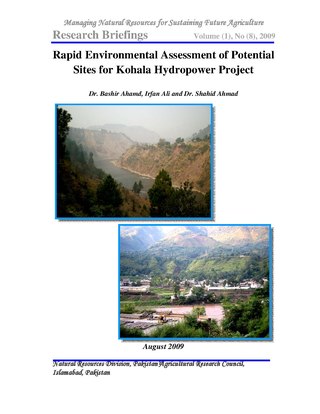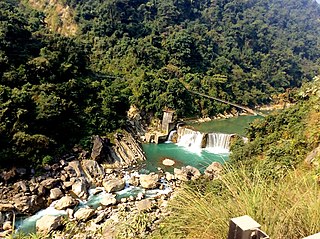Hydroelectric
There are 556 hydroelectric power plants in Switzerland that have a capacity of at least 300 kW. Some of these are listed below: [1]
The following page lists power stations in Switzerland . For traction current see List of installations for 15 kV AC railway electrification in Germany, Austria and Switzerland.
There are 556 hydroelectric power plants in Switzerland that have a capacity of at least 300 kW. Some of these are listed below: [1]
| Name | Capacity (MWe) | Location | Geographic coordinates | Type | Operational | Notes |
|---|---|---|---|---|---|---|
| Beznau Nuclear Power Plant, reactor I | 365 | Döttingen | 47°33′09″N8°13′43″E / 47.5524656°N 8.2285935°E | PWR | 1969– | |
| Beznau II | 365 | Döttingen | 47°33′06″N8°13′42″E / 47.5517343°N 8.2282394°E | PWR | 1971– | |
| Mühleberg Nuclear Power Plant | 355 | Muehleberg | 46°58′08″N7°16′05″E / 46.9688616°N 7.2680515°E | BWR | 1972–2019 | |
| Gösgen Nuclear Power Plant | 970 | Däniken | 47°21′58″N7°58′00″E / 47.3659747°N 7.9666758°E | PWR | 1979– | |
| Leibstadt Nuclear Power Plant | 1165 | Leibstadt | 47°36′06″N8°10′57″E / 47.6016925°N 8.1826043°E | BWR | 1984– | |
| Name | Capacity (MW) | Location | Geographic coordinates | Type and fuel | Operational |
|---|---|---|---|---|---|
| Monthey | 55 | Monthey | - | combined cycle [10] | 2009 |
| Tridel | 17 | Lausanne | - | waste [11] | - |
| Giubiasco | 16 | Giubiasco | - | waste | - |
A gas turbine testing facility in Birr AG, belonging to Ansaldo Energia, sometimes feeds up to 740 megawatts into the Swiss electricity grid. [12]

The Limmat is a river in Switzerland. The river commences at the outfall of Lake Zurich, in the southern part of the city of Zürich. From Zürich it flows in a northwesterly direction, continuing a further 35 km it reaches the river Aare. The confluence is located north of the small town of Brugg and shortly after the mouth of the Reuss.
The Duber Khwar Hydropower Plant is located near the town of Pattan in Kohistan, Khyber Pakhtunkhwa, Pakistan on the Duber Khwar River, a right bank tributary of the Indus River. It is approximately 340 km NW from Islamabad, the federal capital of Pakistan.
Golen Gol Hydropower Plant (GGHPP) is a hydroelectric power plant located on the Golen Gol River - a major left tributary of Mastuj River in Chitral District of Khyber Pakhtunkhwa province of Pakistan. The dam is located approximately 25 km from Chitral city, and 365 km from the provincial capital of Peshawar. Construction of Golen Gol project began in 2011, and was completed in January 2018.
Chilime Hydropower Plant is hydro power plant in Nepal.

The Kohala Hydropower Project is a proposed run-of-the-river, high head project of 316 meters that will be located near Kohala, in Azad Kashmir. In 2020 the project's agreement was finalised later it was formally signed in a ceremony attended by the Pakistani Prime Minister Imran khan, and Chinese ambassador.

Trishuli Hydropower Station is a peaking run-of-river hydropower station located at Trishuli bazaar of Nuwakot district in Nepal.The plant was constructed in 1976 with an installed capacity of 21 MW. The plant was upgraded to 24 MW. The project was developed jointly by the Government of India and the Government of Nepal. The project cost was INR 140 million. The annual energy generation is 304.78 GWh.Nepal Electricity Authority, a government-run organization, owns and operates this plant. Another power station Devighat Hydropower Station is a cascade project to this power station.

Tinau Hydropower Plant is a run-of-river hydro-electric plant located in Rupandehi District of Nepal. The flow from Tinau River is used to generate 1.024 MW electricity.
Jhimruk Khola Hydropower Station is a run-of-river hydro-electric plant located in Pyuthan District of Nepal. The flow from Jhimruk River, a tributary of West Rapti River, is used to generate 12 MW electricity and annual energy of 72 GWh. The flow is transferred to Madi River at the tailrace. The powerhouse is semi-underground type located on the bank of the Madi River. The plant is owned and developed by Butwal Power Company Limited, an IPP of Nepal in technical help from UMN. The plant started generating electricity since 2052-01-25 BS. The generation licence will expire in 2101-12-30 BS, after which the plant will be handed over to the government. The power station is connected to 132 kV national grid through 41 km long transmission line at Lamahi substation. The electricity is sold to Nepal Electricity Authority.
Piluwa Khola Hydropower Project is a run-of-river hydro-electric plant located in Sankhuwasabha District of Nepal. The flow from Piluwa River is used to generate 3.0 MW electricity. The design flow is 3.5 m3/s and head is 112.5 m. The plant is owned and developed by Arun Valley Hydropower Development Company Pvt. Ltd. The plant started generating electricity since 2060-06-01 B.S. The generation licence will expire in 2097-04-32 BS, after which the plant will be handed over to the government.
Chhandi Khola Hydropower Station is a run-of-river hydro-electric plant located in Lamjung District of Nepal. The flow from Chhandi River is used to generate 2 MW electricity. The plant has design flow of 0.67 m3/s and design head of 710 m, making it one of the projects with the largest head.